
SS Elingamite was an Australian passenger steamer of 2,585 tons, built in 1887, and owned by Huddart Parker. The ship was wrecked on 9 November 1902 off the north coast of New Zealand carrying a large consignment of gold. Now the Elingamite wreck is a favourite site for adventurous divers because of the drama associated with it, and wild tales of lost treasure.

The T2 tanker, or T2, was a class of oil tanker constructed and produced in large numbers in the United States during World War II. Only the T3 tankers were larger "navy oilers" of the period. Some 533 T2s were built between 1940 and the end of 1945. They were used to transport fuel oil, diesel fuel, gasoline and sometimes black oil-crude oil. Post war many T2s remained in use; like other hastily built World War II ships pressed into peacetime service, there were safety concerns. As was found during the war, the United States Coast Guard Marine Board of Investigation in 1952 stated that in cold weather the ships were prone to metal fatigue cracking, so were "belted" with steel straps. This occurred after two T2s, Pendleton and Fort Mercer, split in two off Cape Cod within hours of each other. Pendleton's sinking is memorialized in the 2016 film The Finest Hours. Engineering inquiries into the problem suggested the cause was poor welding techniques. It was found the steel was not well suited for the new wartime welding construction. The high sulfur content made the steel brittle and prone to metal fatigue at lower temperatures.
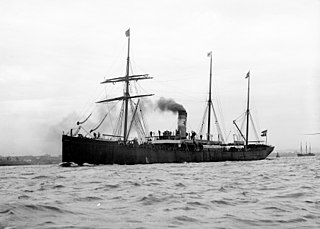
SSNorge was a transatlantic ocean liner that was launched in 1881 in Scotland, and lost in 1904 off Rockall with great loss of life. Her final voyage was from Copenhagen, Kristiania and Kristiansand, bound for New York, carrying passengers many of whom were emigrants. It was the biggest civilian maritime disaster in the Atlantic Ocean until the sinking of Titanic eight years later, and is still the largest loss of life from a Danish merchant ship.

German submarine U-48 was a Type VIIB U-boat of Nazi Germany's Kriegsmarine during World War II, and the most successful that was commissioned. During her two years of active service, U-48 sank 52 ships for a total of 306,874 GRT and 1,060 tons; she also damaged three more for a total of 20,480 GRT over twelve war patrols conducted during the opening stages of the Battle of the Atlantic.
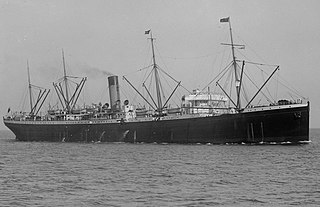
SS Suevic was a steamship built by Harland and Wolff in Belfast for the White Star Line. Suevic was the fifth and last of the Jubilee-class ocean liners, built specifically to service the Liverpool-Cape Town-Sydney route, along with her sister ship Runic. In 1907 she was wrecked off the south coast of England, but in the largest rescue of its kind, all passengers and crew were saved. The ship herself was deliberately broken in two, and a new bow was attached to the salvaged stern portion. Later serving as a Norwegian whaling factory ship carrying the name Skytteren, she was scuttled off the Swedish coast in 1942 to prevent her capture by ships of Nazi Germany.
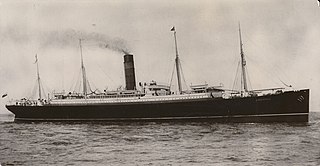
RMS Carpathia was a Cunard Line transatlantic passenger steamship built by Swan Hunter & Wigham Richardson in their shipyard in Wallsend, England.
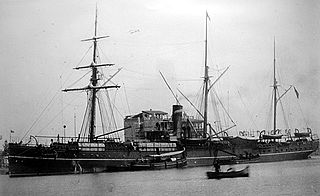
The SS Bokhara was a P&O steamship which sank in a typhoon on 10 October 1892, off the coast of Sand Island in the Pescadores, Formosa. Of the 150 people who perished, eleven were members of the Hong Kong cricket team.

SS Barøy was a 424-ton steel-hulled steamship delivered from the Trondhjems mekaniske Værksted shipyard in Trondheim in 1929. She had been ordered by the Norwegian shipping company Ofotens Dampskibsselskab for the local route from the port city of Narvik to the smaller towns of Lødingen and Svolvær. After the company suffered ship losses in the 1940 Norwegian Campaign Barøy was put into Hurtigruten service on the Trondheim–Narvik route. She was sunk with heavy loss of life in a British air attack in the early hours of 13 September 1941.
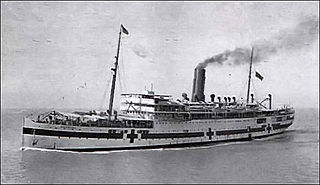
SS Erinpura was an E-class ocean liner of the British India Steam Navigation Company, built in 1911. She was the first British India ship built for Eastern service to be fitted with radio. She served in both World Wars. Enemy action in 1943 sank her in the Mediterranean Sea with great loss of life.

SS Columbia (1880–1907) was a cargo and passenger steamship that was owned by the Oregon Railway and Navigation Company and later the San Francisco and Portland Steamship Company. Columbia was constructed in 1880 by the John Roach & Sons shipyard in Chester, Pennsylvania for the Oregon Railway and Navigation Company.

SS Utopia was a transatlantic passenger steamship built in 1874 by Robert Duncan & Co of Glasgow. From 1874 to 1882 she operated on Anchor Line routes from Glasgow to New York City, from Glasgow to Bombay and from London to New York City. After 1882 she carried Italian immigrants to the United States.

Bulgaria was a class 785/OL800 Russian river cruise ship which operated in the Volga-Don basin. On 10 July 2011, Bulgaria sank in the Kuybyshev Reservoir of the Volga River near Syukeyevo, Kamsko-Ustyinsky District, Tatarstan, Russia, with 201 passengers and crew aboard when sailing from the town of Bolgar to the regional capital, Kazan. The catastrophe led to 122 confirmed deaths.

SS Berlin was a steel ship, which was owned by the Great Eastern Railway and built for use on their ferry service from Harwich and the Hook of Holland, which the company had initiated in 1893.

SSPrincipessa Mafalda was an Italian transatlantic ocean liner built for the Navigazione Generale Italiana (NGI) company. Named after Princess Mafalda of Savoy, second daughter of King Victor Emmanuel III, the ship was completed and entered NGI's South American service between Genoa and Buenos Aires in 1909. Her sister ship SS Principessa Jolanda sank immediately upon launching on 22 September 1907.
SS Point Pleasant Park was a merchant steamship constructed for Canada's Merchant Navy in 1942 during the Second World War as part of Canada's Park ship program. She carried a variety of wartime cargoes to Atlantic and Indian Ocean ports until the German submarine U-510 sank her off the coast of South Africa on 23 February 1945 as Point Pleasant Park was sailing independently from Saint John, New Brunswick to Cape Town. Point Pleasant Park was the last vessel sunk in South African waters during the Second World War.

SS Shuntien was a 3,059 GRT coastal passenger and cargo liner of the British-owned The China Navigation Company Ltd (CNC). She was built in Hong Kong in 1934 and sunk by enemy action in the Mediterranean Sea with great loss of life in 1941. A Royal Navy corvette rescued most of Shuntien's survivors, but a few hours later the corvette too was sunk and no-one survived.
MV Abosso was a passenger, mail, and cargo liner, the flagship of Elder Dempster Lines. In peacetime she ran scheduled services between Liverpool and West Africa. In the Second World War she was a troop ship, running between the United Kingdom, West Africa, and South Africa.

SS Ceylan was a passenger ship of the French shipping company Compagnie des Chargeurs Réunis, which entered service in 1907 and was scrapped in 1934. In January 1920 she rescued 34 survivors of the passenger ship SS Afrique, which had sunk in a storm in the Bay of Biscay.
SS Canadian was a British passenger ship which struck an iceberg and sank in the Strait of Belle Isle while she was travelling from Quebec, Canada to Liverpool, United Kingdom in 1861. Thirty-five out of 301 persons aboard the ship perished in the disaster.
SS Sagamore was a transatlantic cargo liner that was built in Ireland in 1892 for George Warren's White Diamond Steam Ship Company. In 1913 she was modified to carry passengers as well as cargo. In 1917 a German U-boat sank her, causing the death of 52 members of her crew.
















